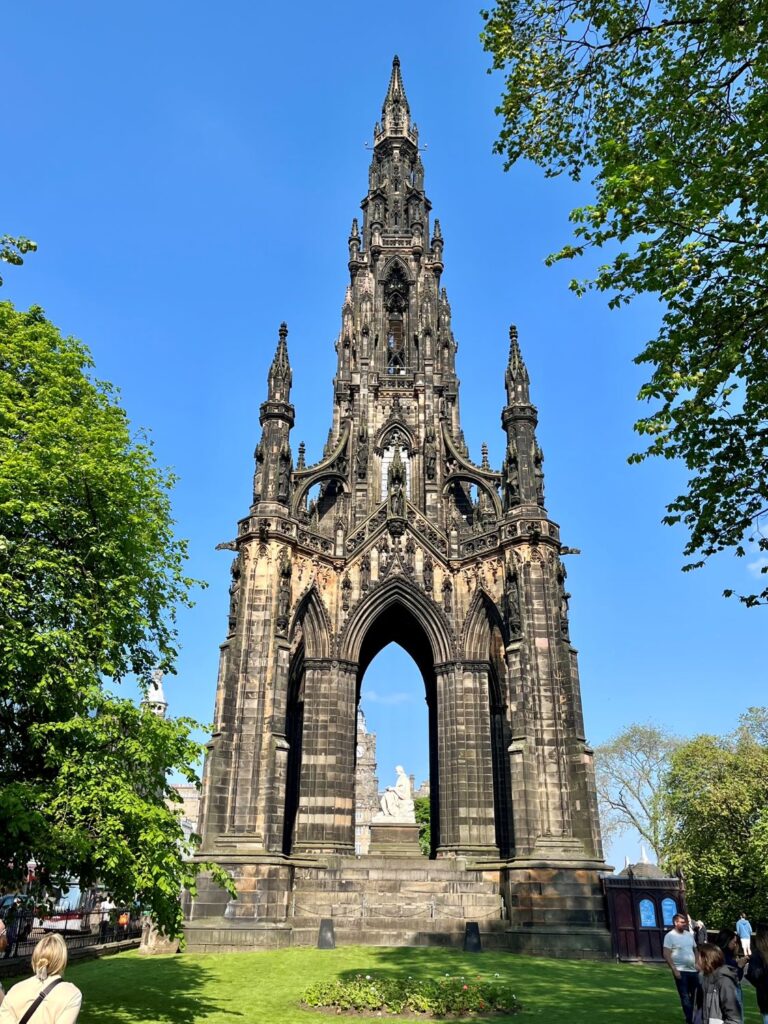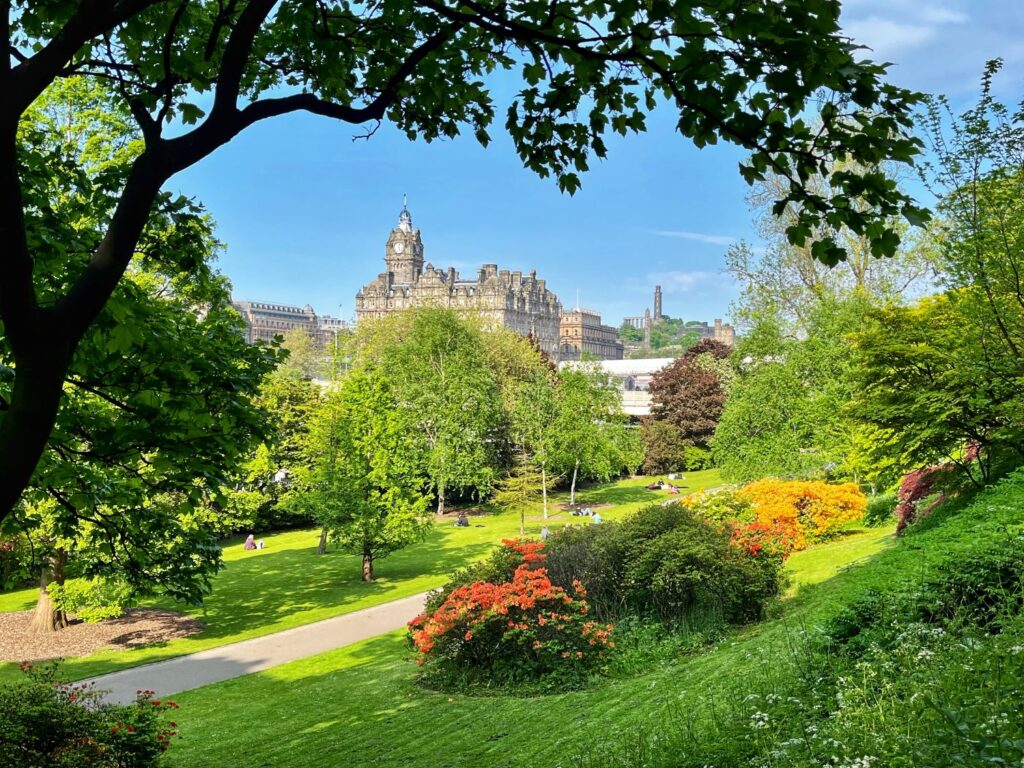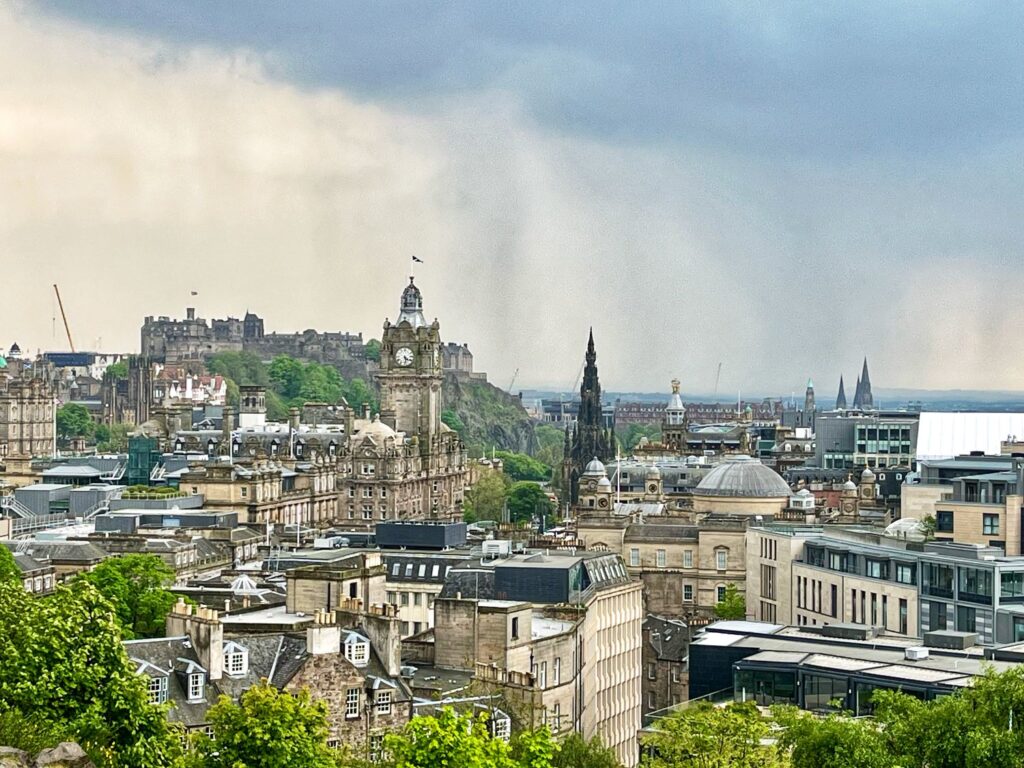
My Scottish adventure began on Sunday, May 12th, 2024, when I arrived at Edinburgh Airport early in the morning, after a red-eye flight from Boston. This trip had two components: 4 days solo traveling in Edinburgh and the surrounding towns, followed by 8 days hiking in the Scottish Highlands on a group tour booked with Wild Women Expeditions. The entire trip was a success and I equally enjoyed the different aspects of traveling solo as well as traveling on a small group tour. This blog chronicles my solo traveling in the Edinburgh area.
Day 1 – Holyroodhouse Palace, Arthur’s Seat, & Calton Hill
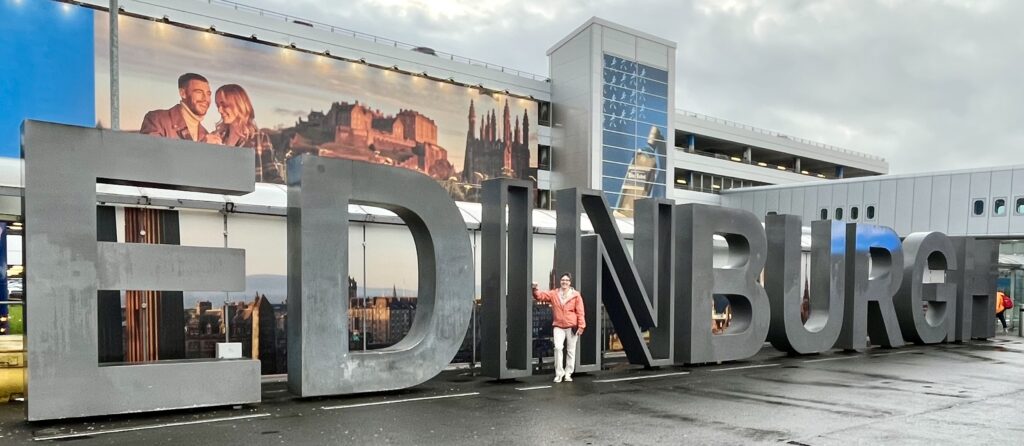
Immigration was quick and easy at Edinburgh Airport. It was fully automated and all you did was scan your passport and look at a camera. I caught the Lothian Airlink 100 bus at the airport and traveled to Princes Street in the city center, where I transferred to another bus to reach my Air B&B. The public transportation in Edinburgh was wonderful and the city is a very walkable city. While I only slept about 45 minutes on the plane, I chose to adopt immediately to the Scottish time zone. I dropped my bags and headed out for my first stop of the day – Holyroodhouse Palace, the King of England’s (King Charles) official residence in Edinburgh and the home of Scottish Royal History.
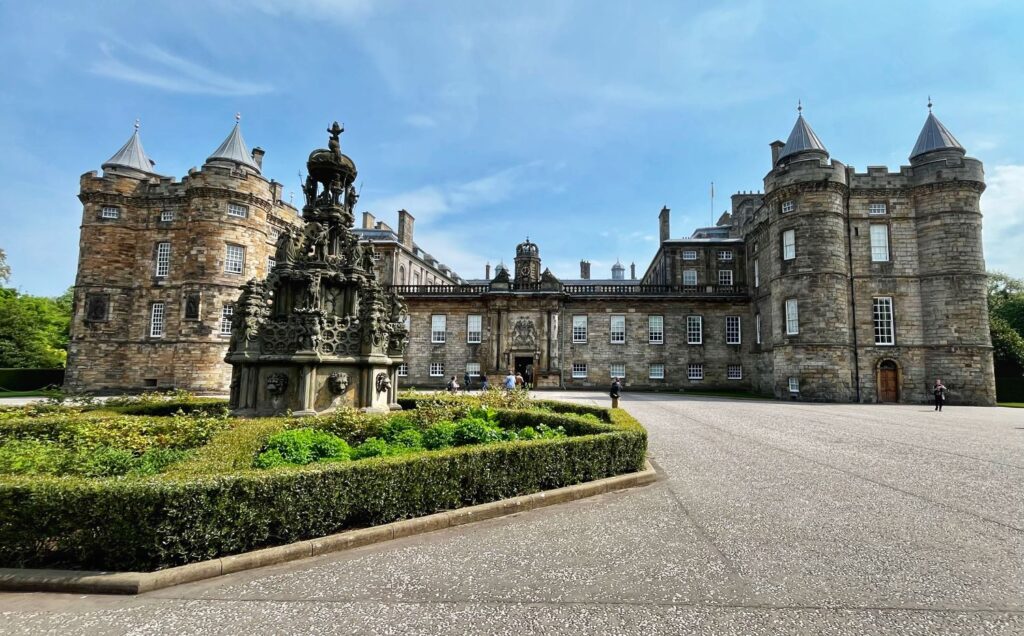
There was a nice audio tour that takes you thru the state apartments, the throne room, Mary Queen of Scot’s chambers, the Great Gallery, the ruins of the Holyrood Abbey, and the palace gardens. No photography is permitted inside the palace. From the Holyroodhouse Palace it is just a short walk across Holyrood Park to the trail for Arthur’s Seat, the highest point in Edinburgh. It was a gorgeous day and there were plenty of locals out sunbathing and playing in the grassy fields.
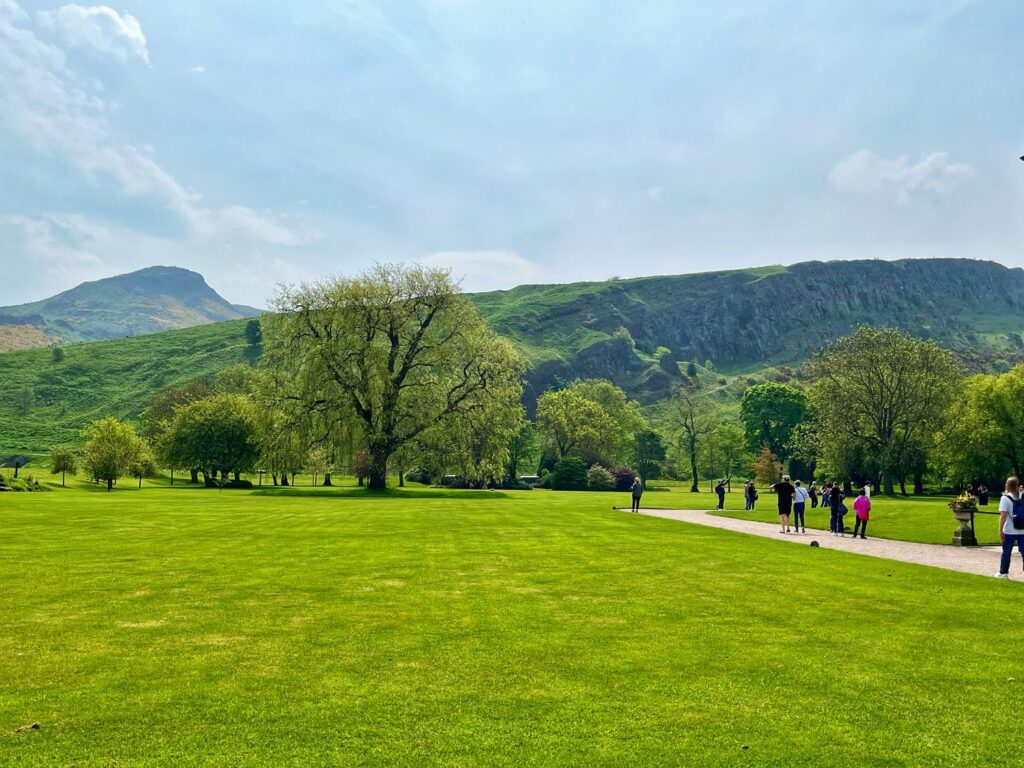
Arthur’s Seat is an ancient extinct volcano and rises to 822 ft, which provides excellent panoramic views of the city. There are multiple trails to the top. It was a short but steep walk with a bit of scrambling at the top. I took a slight detour off the trail to see the ruins of St. Anthony’s Chapel. Arthur’s Seat was covered in Gorse, a bright yellow, invasive flower with spiky leaves. It is edible and has a flavor with a hint of coconut. Apparently the flower tastes different depending on if it is growing on the north or south side of the bush. I also saw a wild pheasant from the trail, which was a first for me. There is also another peak nearby called Salisbury Crags.
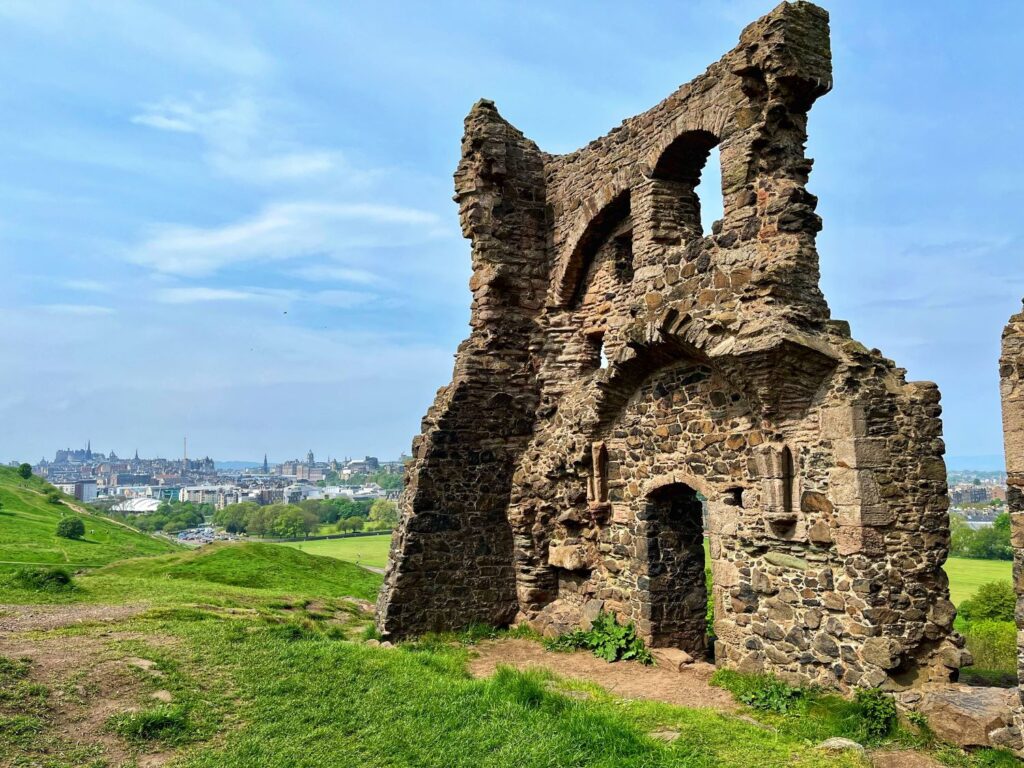
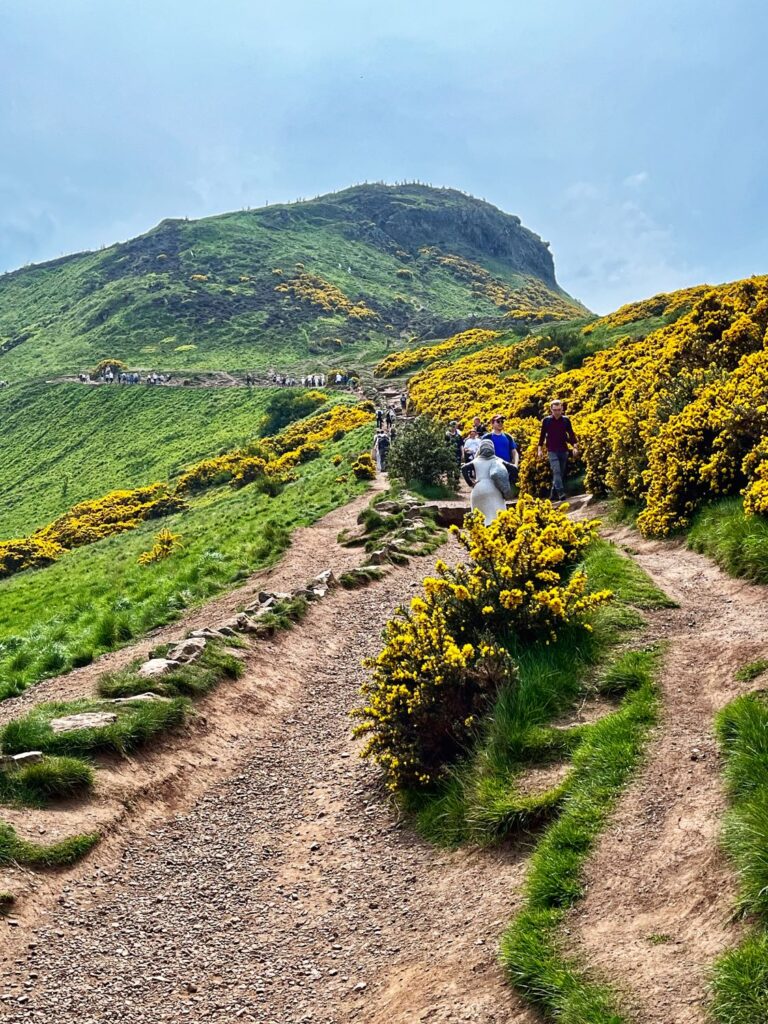
There is also another peak nearby called Salisbury Crags. My lack of sleep was starting to get to me so I chose not to hike up that peak and instead walked back to the Air B&B for a little nap. Unbeknownst to me, my accommodation was located less than a quarter mile from Easter Road Stadium, home to the Hibernian Football Club (the Hibs), a soccer team that plays in the top division of Scottish Football. They had a home game that afternoon so needless to say, it was quite loud in the area and I wasn’t going to get any sleep. I “rested” for about an hour and then ventured out again for more exploring. I headed for Calton Hill, another scenic vantage point across from Arthur’s Seat.
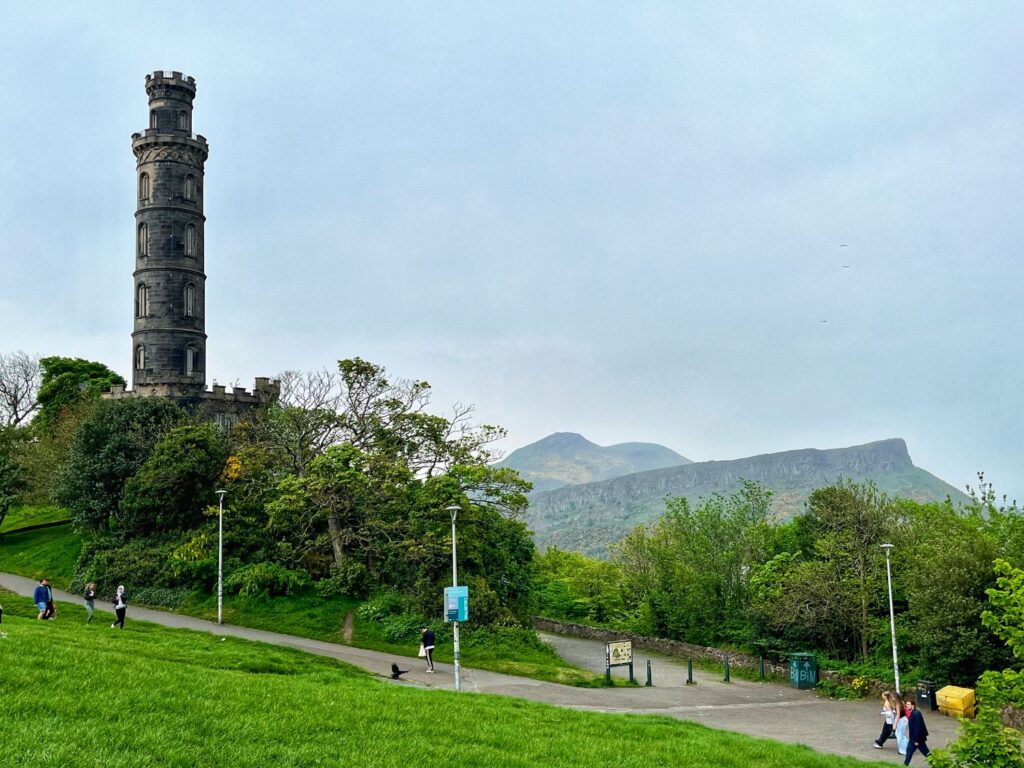
Calton Hill is included in the city’s UNECO World Heritage Site. There are several monuments on the hill including: the National Monument, the Nelson Monument, the Dugald Stewart Monument, the Robert Burns Monument, and the City Observatory. The Scottish Parliament Building sits at the base of the hill. The National Monument is a memorial to the Scottish soldiers and sailors who died fighting in the Napoleonic Wars. It was modeled after the Parthenon but due to lack of funds it was never completed and therefore has been given numerous nicknames: Scotland’s Folly & Edinburgh’s Disgrace.
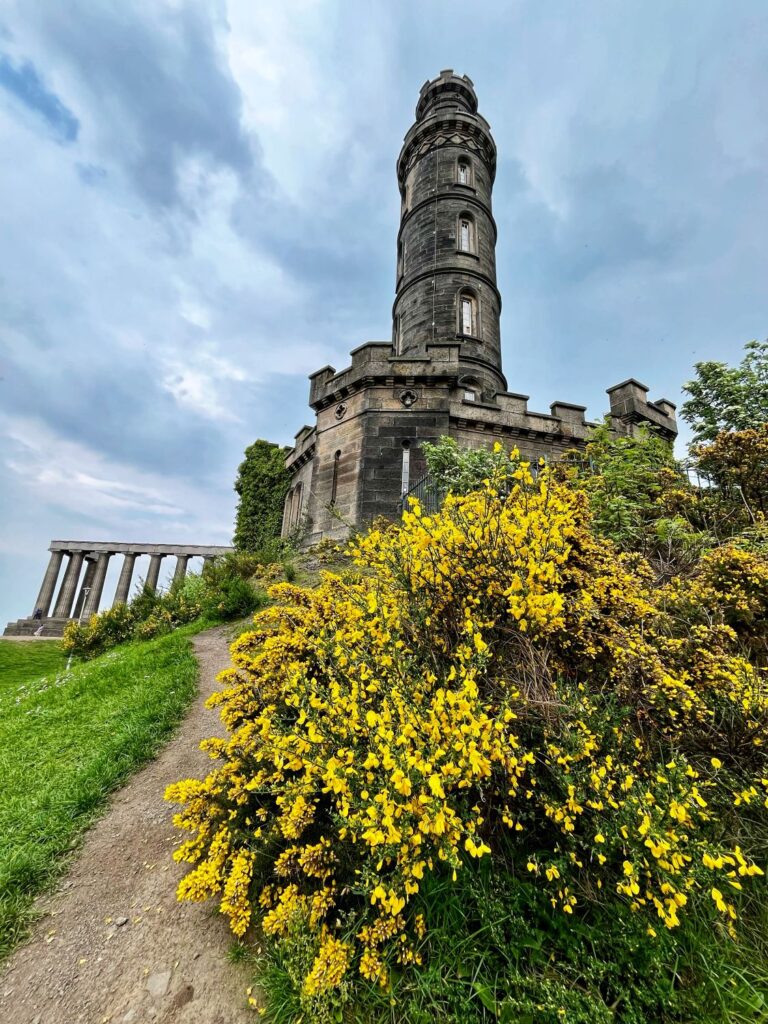
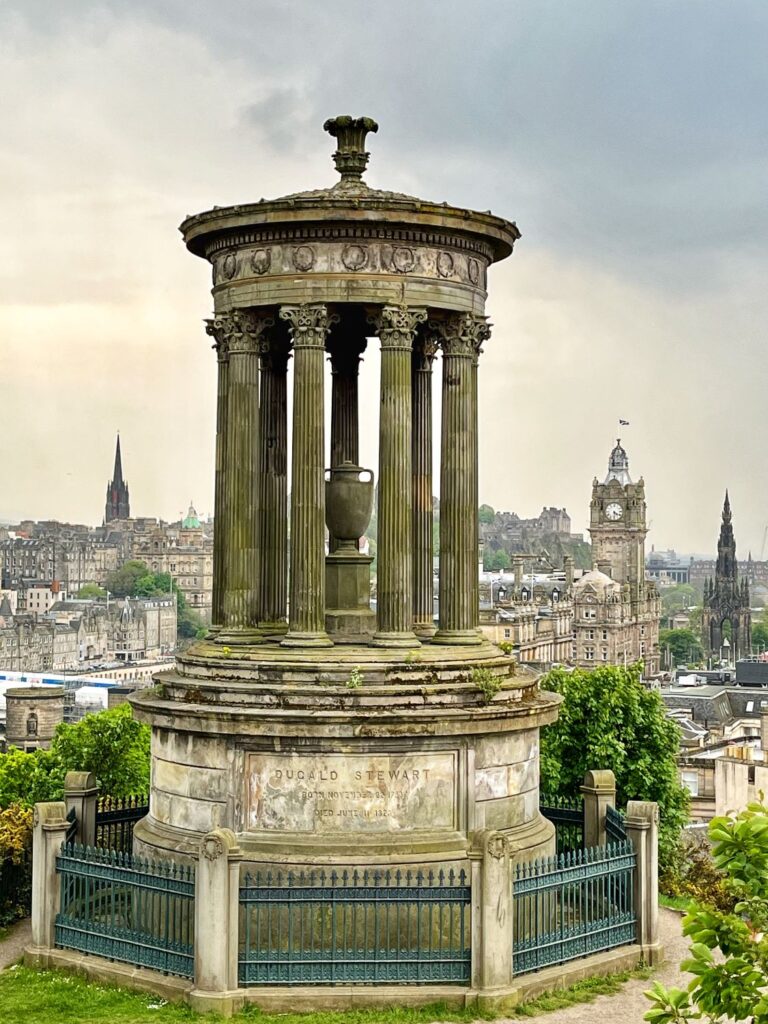
I started walking back to the Air B&B but got caught in a torrential downpour so I ducked into Howies Waterloo, a restaurant serving traditional Scottish food. I went all out Scottish and ordered Cullin Skink soup and Haggis with neets and tatties (mashed turnips and potatoes). The Cullen Skink soup reminded me of New England fish chowder, but with bacon in it. Haggis is the national dish of Scotland and is composed of the liver, heart, and lungs of a sheep minced and mixed with beef or mutton, oatmeal, and seasoned with onion, cayenne pepper, and other spices. I liked it and it reminded me of a spicy sausage. After dinner I walked back to the Air B&B for a well deserved night’s sleep after walking 12.8 miles throughout the day.
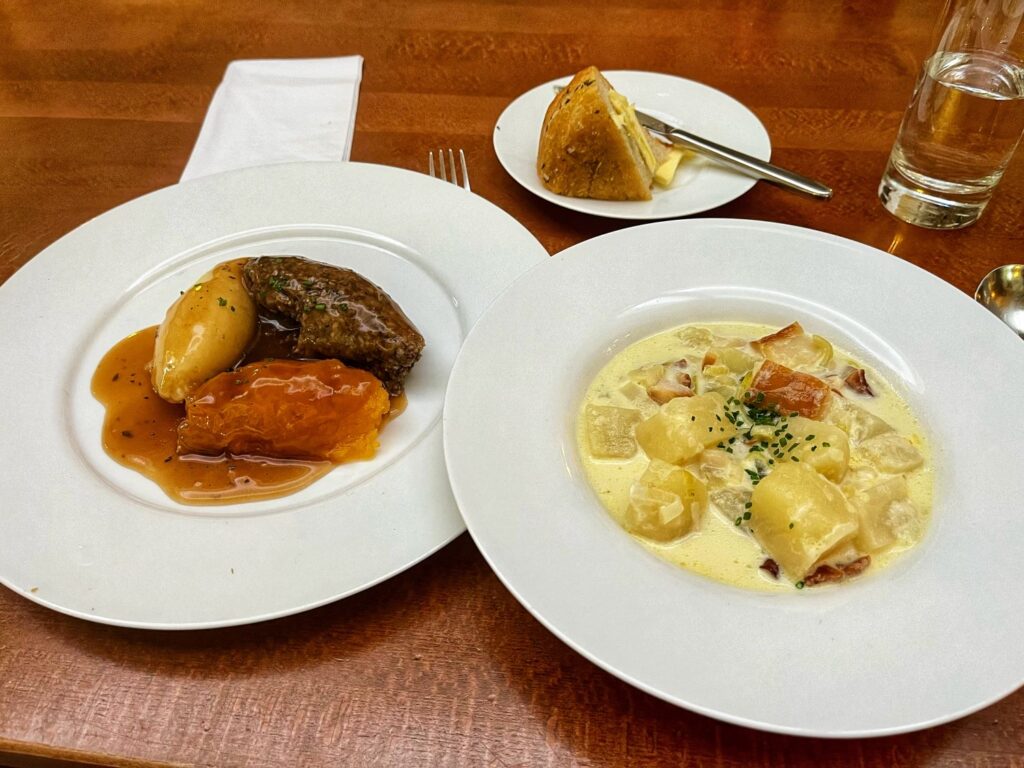
Day 2 – The Real Mary King’s Close, Edinburgh Castle, Royal Botanical Gardens, & Dean Village
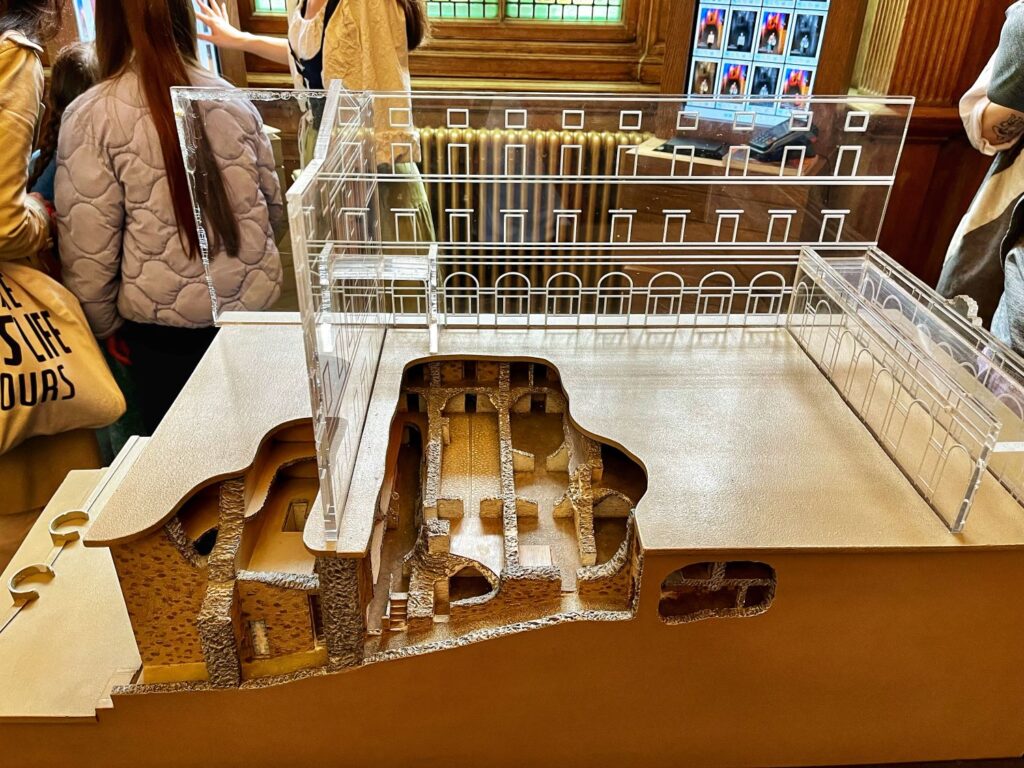
On my second full day in Edinburgh I walked back up to the Old Town for my 9:45am tour of The Real Mary King’s Close. A close is an alleyway. Mary King’s Close is the only preserved 17th century street in Edinburgh. They have since built the city on top of it (the Exchange). Our guide was Lang Mai (real name, Becca), a Foul Clenger from 1645. The Foul Clenger was a person who cleaned the homes of those afflicted by the plague epidemic. I found the tour extremely informative, and Becca was extremely enthusiastic. Always avoid the cry of “gardyloo”. This was the word shouted when someone emptied the poop bucket out the window or door and onto the street. The waste would then flow down the street into the loch, the same loch they used for their drinking water and cleaning water. It’s amazing anyone survived into adulthood.
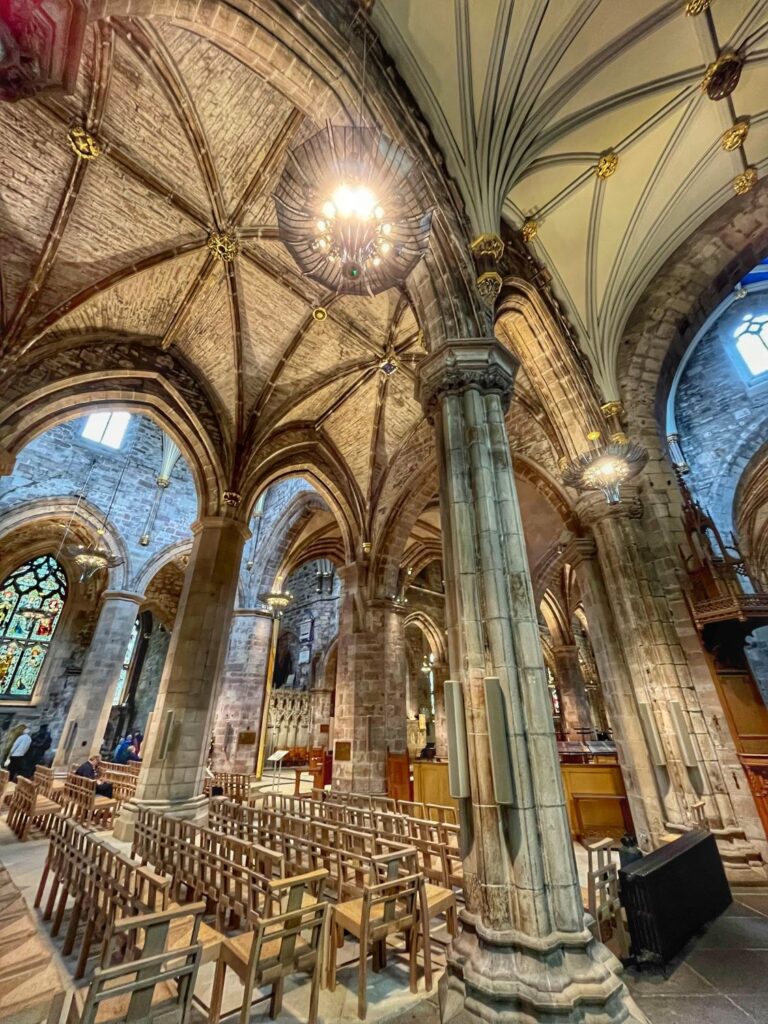
I had an hour and a half to kill before my timed entry into Edinburgh Castle, so I again took to the streets. I visited Grassmarket Street, an Old Town curved street with a row of colorful shops. I stopped for an early lunch at “Oink”, recommended by Stevie (owner of my Air B&B). I had an Oink (middle sized sandwich, the smaller sandwich was called a Piglet and the larger sandwich was called a Grunter), which was a roasted hog meat sandwich on white bread with sage and onion stuffing and an apple sauce. I made a stop at St. Giles Cathedral, a beautiful parish church of the Church of Scotland. The current building was begun in the 14th century, extending into the 16th century. Major renovations to the cathedral were performed in the 19th and 20th centuries.
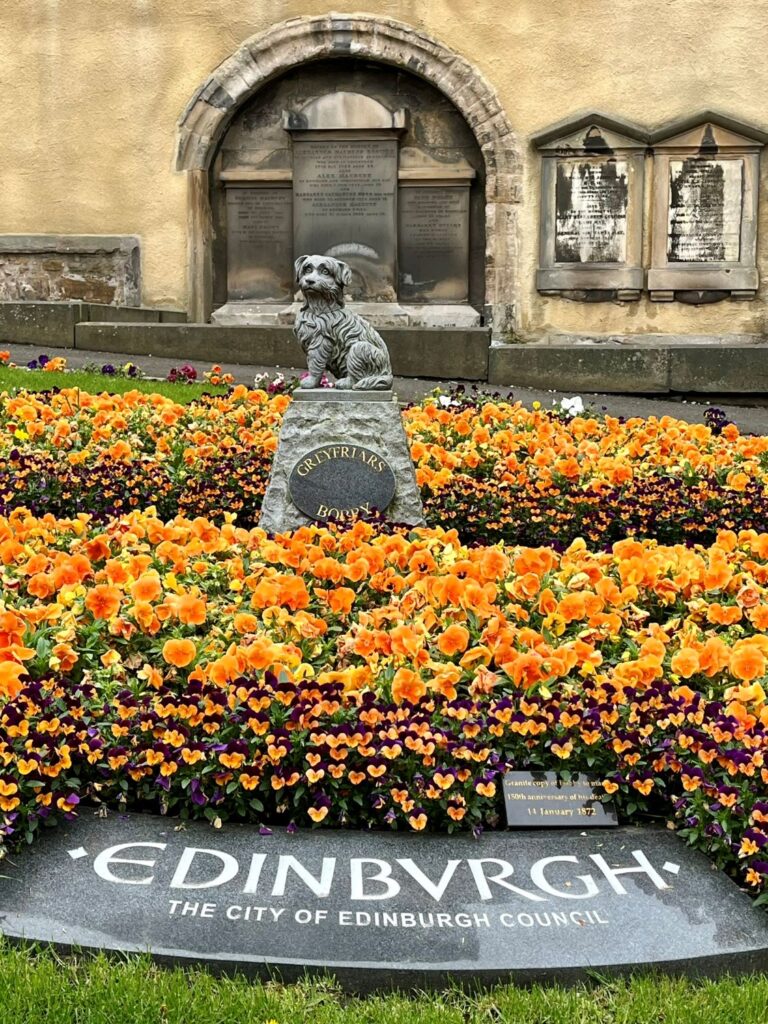
I also stopped to see the statue of Greyfriars Bobby. Greyfriars Bobby was a Skye Terrier belonging to a policeman named John Gray. When John Gray died, his dog sat by his gravesite for 14 years, guarding the site until Greyfriars Bobby’s death in 1872. A statue was erected in honor of Greyfriars Bobby. There is also now a gravestone and stone statue of Greyfriars Bobby in the Greyfriar’s Kirkyard (churchyard). This churchyard is also said to be the churchyard where J.K. Rowling found the names for some of the Harry Potter characters, most notably Thomas Riddell and Elizabeth Moodie (spellings were changed). I wandered through the graves and gave a short listen to a tour guide.
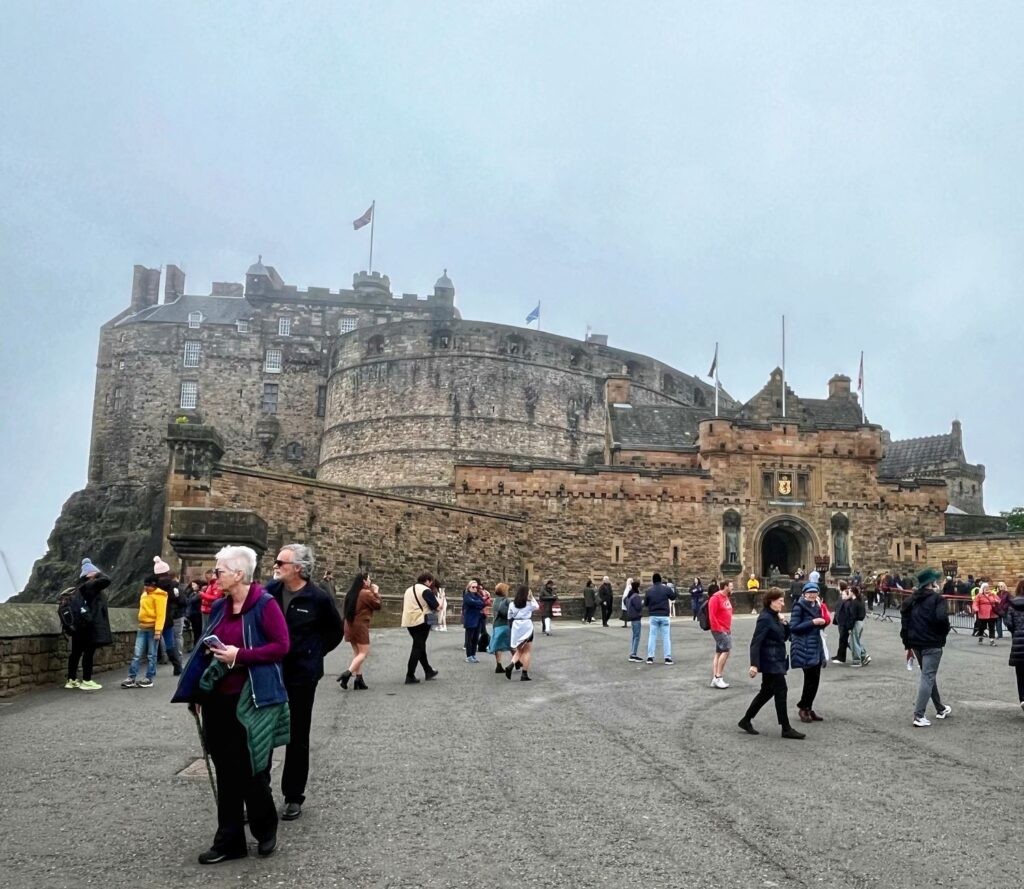
I had a 12:30pm timed entry ticket to Edinburgh Castle, but even with the timed entry it was very crowded. There was a lot of construction going on outside the castle. Apparently, they spend 3 months of the year setting up for the Military Tattoo (held in August) and 3 months taking it down. The castle tour was self-guided with many military museums. No photos could be taken in the Honours of Scotland building which houses the oldest crown jewels in Britain. I was there to witness the One O’Clock Gun firing. This firing dates back to 1861 when the ships in the Firth of Forth set their maritime clocks by this firing. The gun is fired every day except Sundays, Good Friday, and Christmas day. After spending a couple of hours at the castle, I caught a bus to the Royal Botanical Gardens. The bus system in Edinburgh is awesome! The Lothian buses have a feature called Tap Tap Cap. Simply tap the same credit card whenever you get on a bus and the system will automatically cap you at £4.80 per day or £22.00 per week. Basically, unlimited city bus rides for a little over $6 a day.
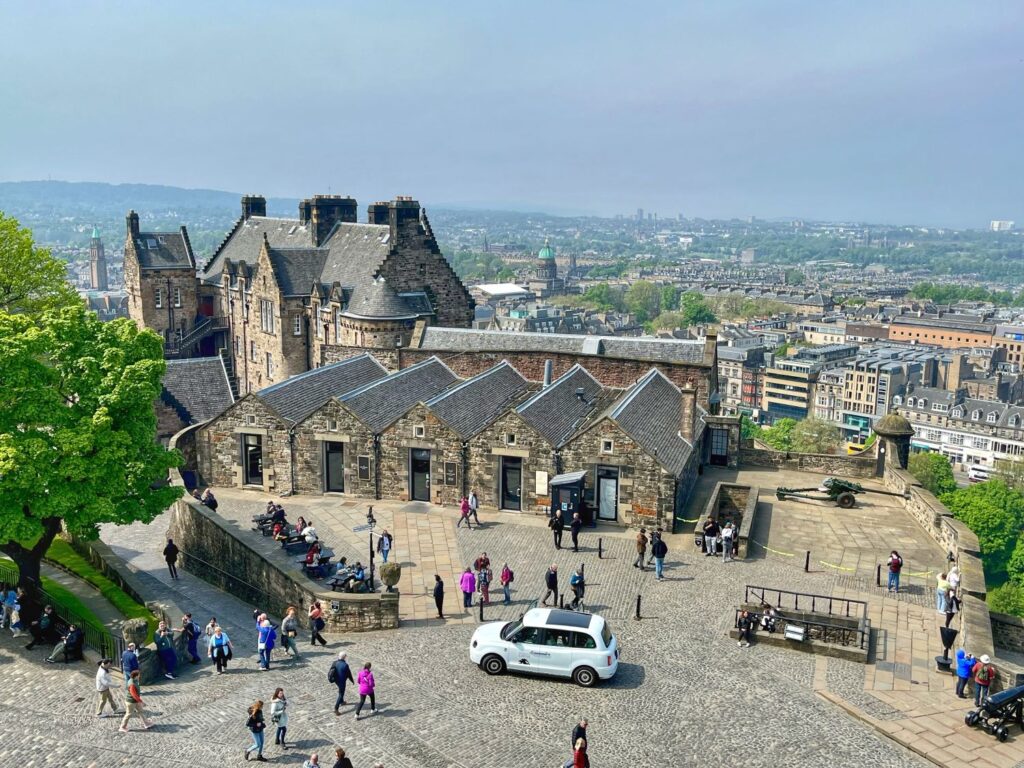
Unfortunately, the Glass Houses (conservatories) at the Royal Botanical Gardens were closed for renovation, but the grounds were gorgeous. Admission is free. I never realized how many different colored azaleas there are and I never realized how big rhododendrons could grow. I think one of the biggest surprises to me was how many flowers and rhododendrons I saw throughout the trip. They made an excellent foreground in photos. I spent 20 minutes just sitting in the azalea garden while my phone charged and then another 20 minutes in the Terrace Café where I had a late lunch/early dinner consisting of a mozzarella/prosciutto/basil sandwich along with a brownie.
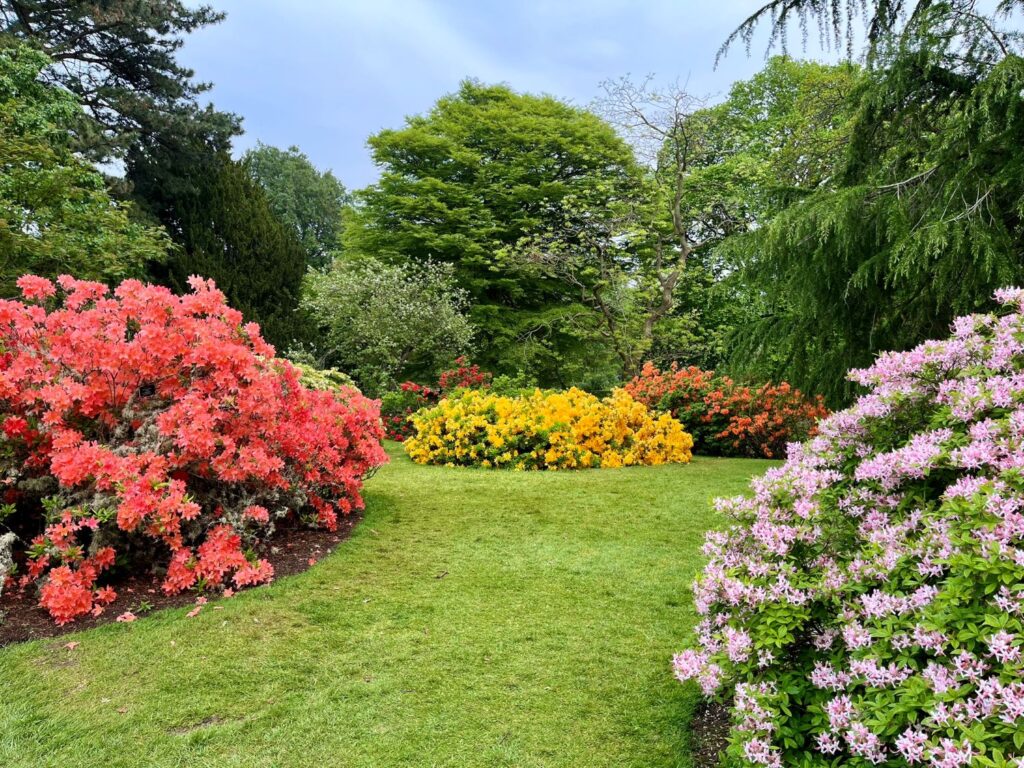
Since the Botanical Gardens are somewhat of a way outside the Old Town/New Town area, I chose to also visit Dean Village and the Waters of Leith Way while I was in the area. Dean Village is a quaint village along the waterway and there is a lovely path that goes on for miles. I caught the bus back to the Air B&B, arriving around 7pm. Total mileage walked for the day was 11.8 miles
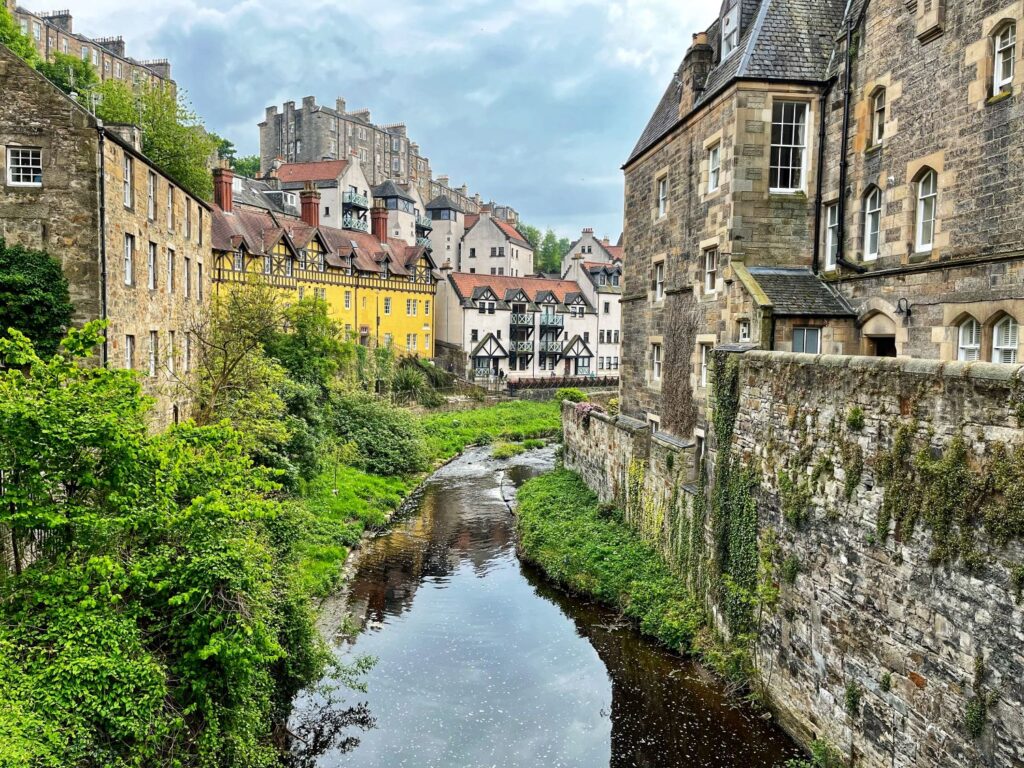
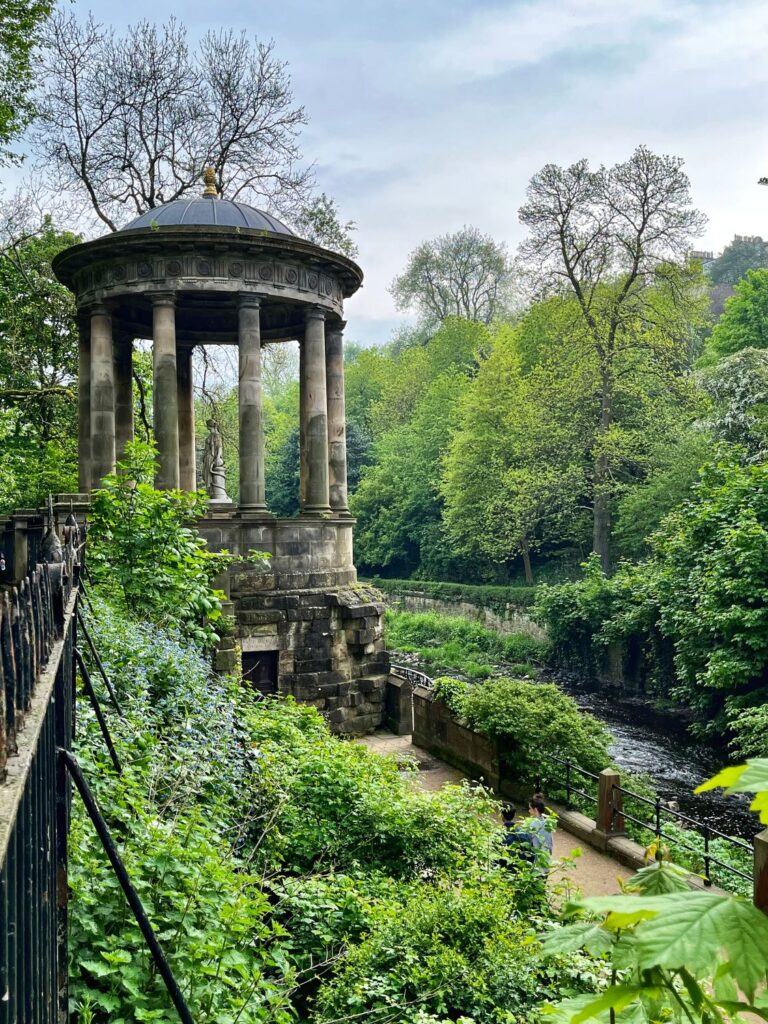
Day 3 – Royal Yacht Britannia, National Museum of Scotland, & the Scotch Whisky Experience
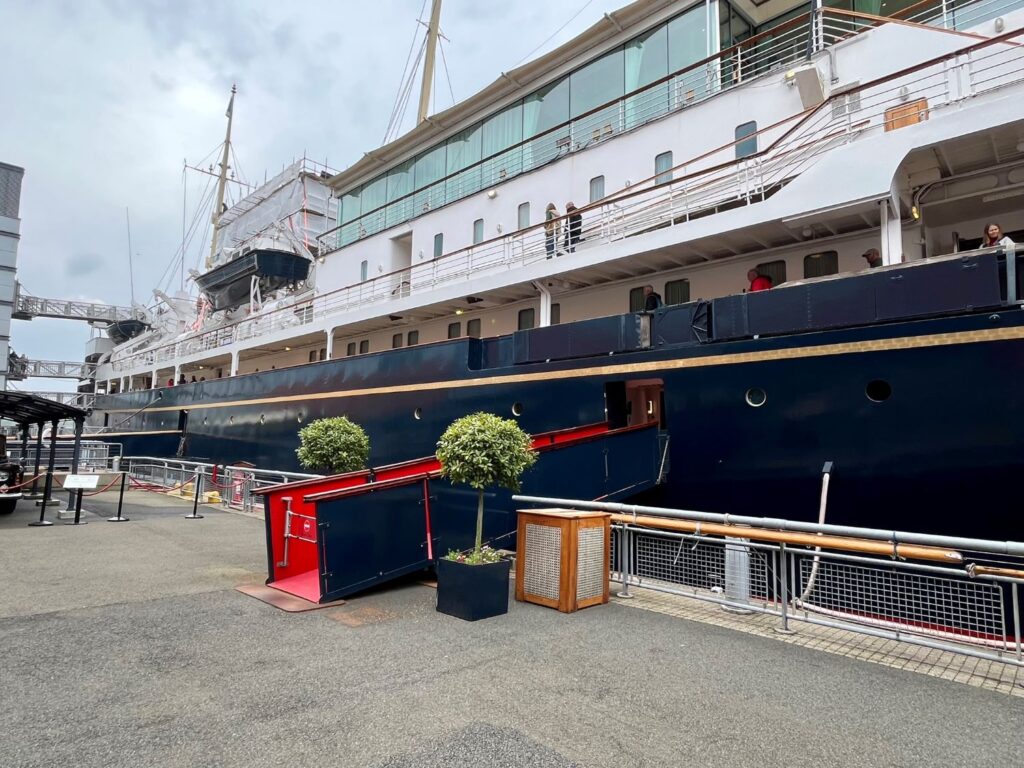
After two big back-to-back days of walking, I decided to utilize the bus more often today as I thought that if I stayed at this pace, I might be too exhausted for the hiking portion of my trip later in the week. My bus ride started on Easter Road where I picked up the Lothian bus #35 which ends it route at the Ocean Terminal. Ocean Terminal is home to a shopping plaza, but my destination was the Royal Yacht Britannia, the former yacht used by Queen Elizabeth II. The yacht was featured in the Netflix series “The Crown”. I was very excited to tour it. The tour was a self-guided audio tour and was excellent. In addition, the yacht is staffed with former royal yachtsmen or yachties as they were known. It was fascinating to listen to their stories. I met Queen Elizabeth II’s butler and was also serenaded by one of the bagpipers who used to play for the queen. The only downside of the visit was that the large funnel on the yacht was being repainted so there was a lot of scaffolding on the outside of the yacht. The Royal Barge (or tender) was also on exhibit.
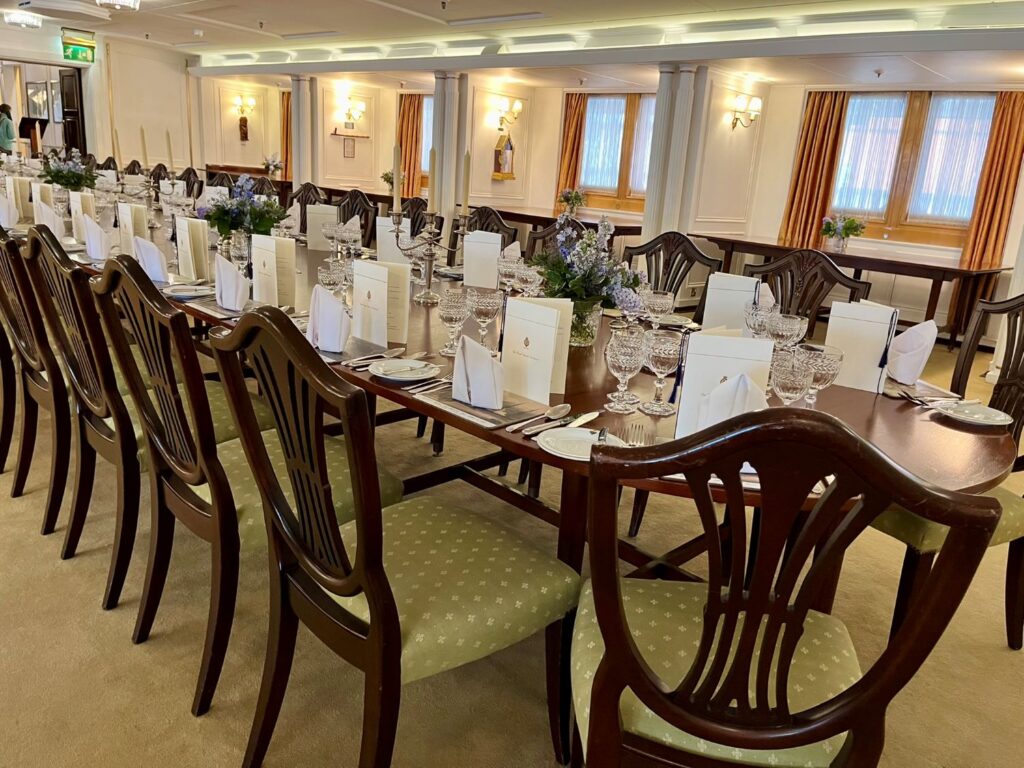
The day was a pretty gray day, so I decided to stick with more indoor activities. I took the bus from the Ocean Terminal back to the Royal Mile where I visited the National Museum of Scotland. Admission was free and it reminded me of our Smithsonian Museums in Washington DC. It had 3 floors of exhibits ranging from Scottish history to science, to world cultures, to flora and fauna. They also have special limited exhibitions that you have to pay for and I was so disappointed because I just missed the Wildlife Photographer of the Year exhibit which had just ended 1 ½ weeks prior. I had a late lunch/early dinner in the café of the museum consisting of a bowl of carrot and leek soup, a cheese scone, and an Irn Bru. Irn Bru is the most popular soda in Scotland, surpassing any Coca Cola product. It tastes like Hubba Bubba bubble gum.
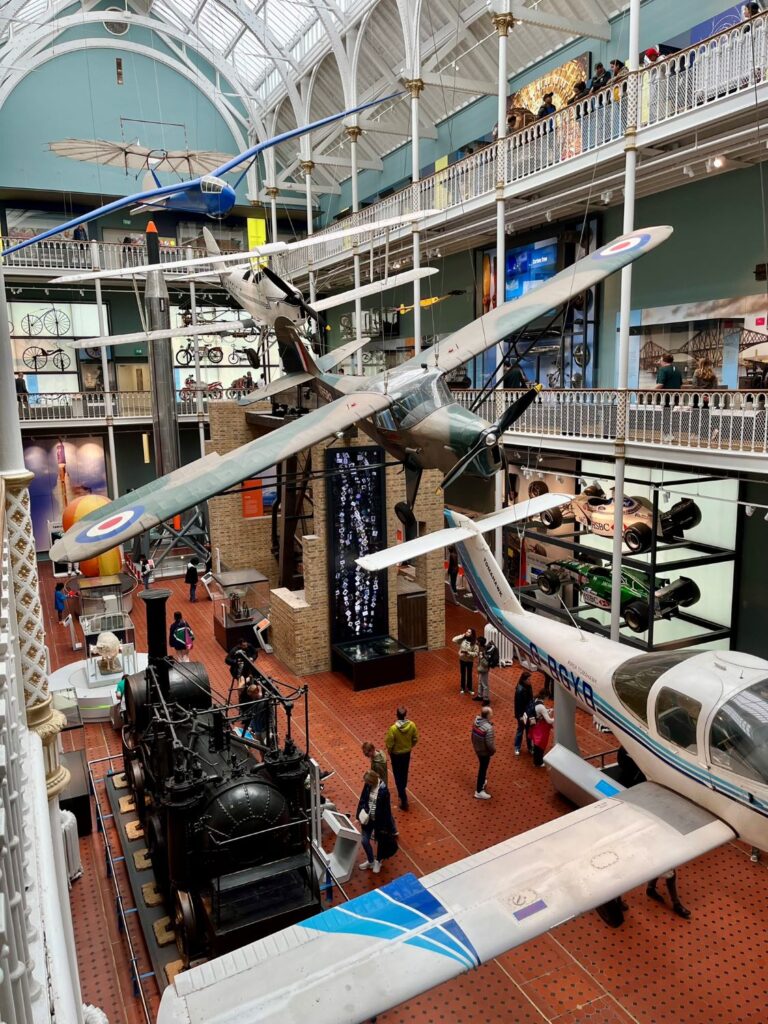
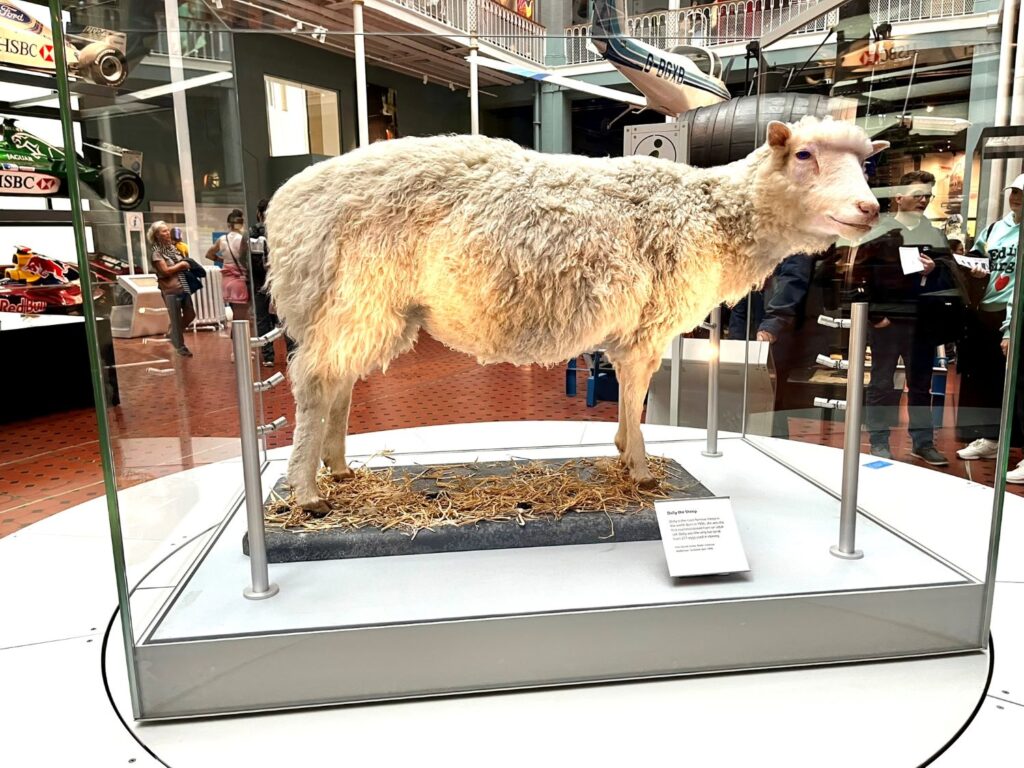
For my final stop of the day, I walked back up towards Edinburgh Castle and was able to snag the final spot on the Scotch Whisky experience. It was a fun experience, a little over sensationalized with special effects, but our guide Adam was excellent. We learned how whisky is made. The beverage is spelled “whisky” in Scotland, while the US and Ireland add the “e” to the spelling (whiskey). All whisky in Scotland must be aged in oak barrels for at least 3 years. The oak barrels are imported from the USA (Kentucky) and Spain. Those from Spain may have also stored port or sherry which can add to the color of the whisky. You need three ingredients for whisky making: water, barley, and yeast. Depending on where these ingredients come from affects the taste and color of the whisky. There are five whisky regions in Scotland: Speyside, the Lowlands, the Highlands, the Islands, and Campbeltown. The Speyside region produces the most whisky. Whisky can also be peated or unpeated. During the whisky making process the barley has to be dried. This can be done by either air drying it or drying it with heat emitted from burning some type of fuel. If peat (a type of soil that can be burned for fuel) is used as the type of fuel, the whisky is then considered peated and has a smokier flavor to it. At the end of the tour, you get to taste one whisky based on your flavor preferences. We carried our glass of whisky into a room housing 3,384 bottles of whisky – a collection that was once owned by Claive Vidiz of Brazil (he started the collection in the 1970s) and then purchased by a Scotch whisky distiller, Diageo, in 2006 and brought back to Scotland.
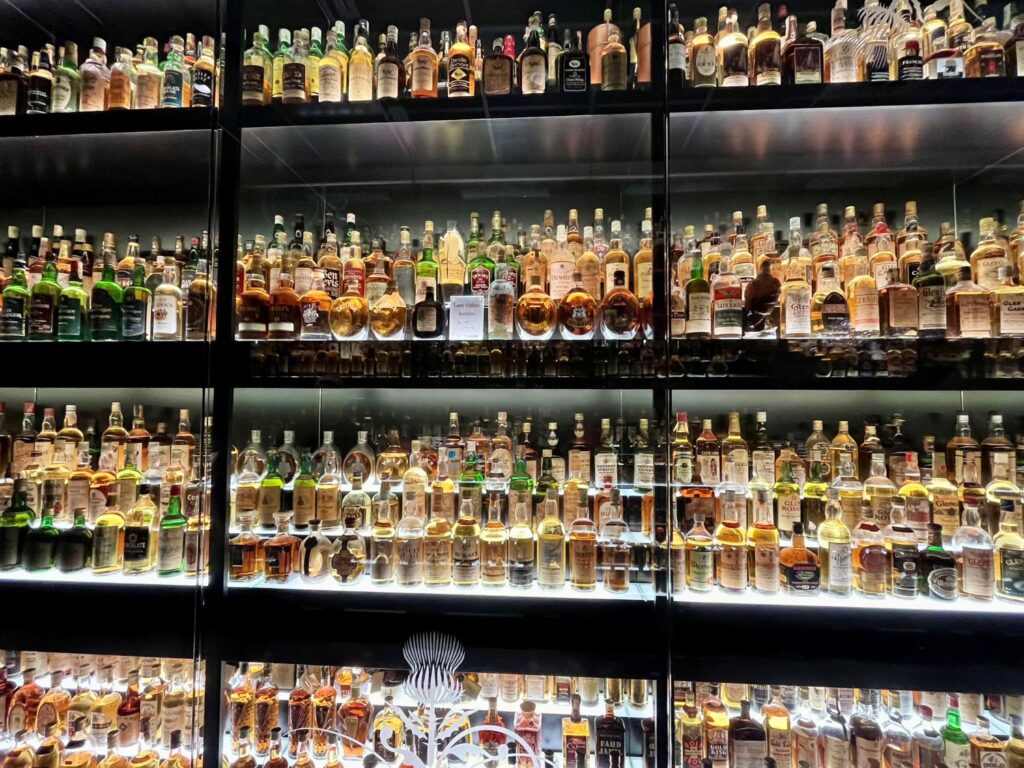
Day 4 – Rosslyn Chapel and the Scottish Border Towns
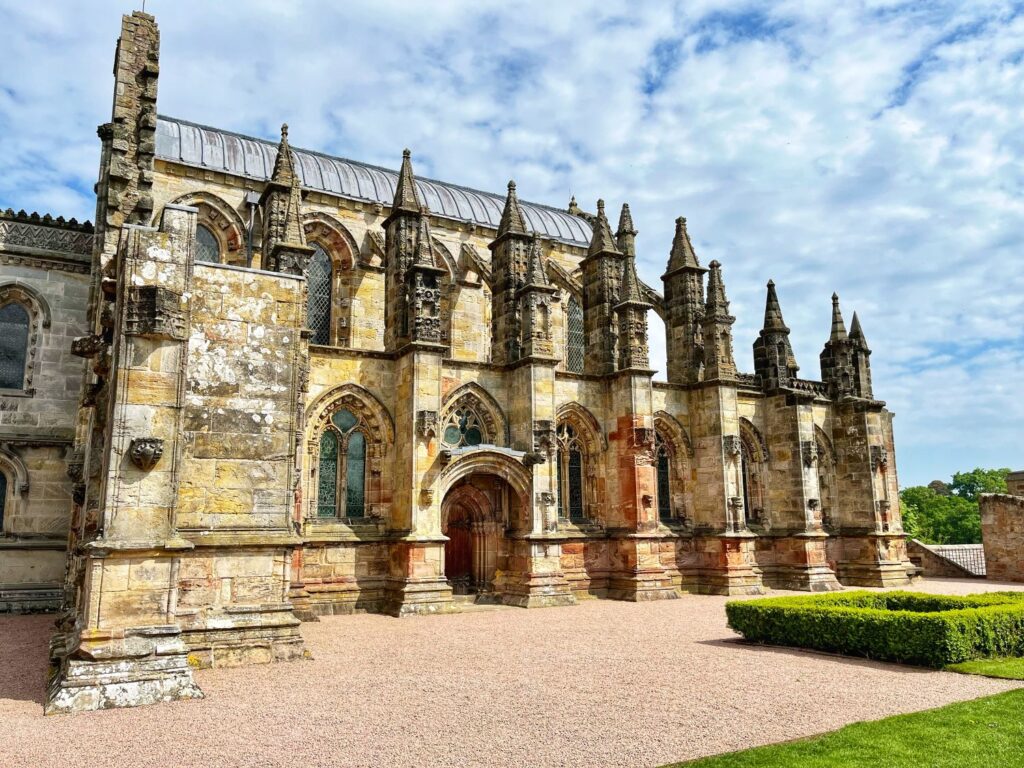
On my final full day in the Edinburgh area I chose to explore the surrounding Scottish border towns with a company called Rabbies. My Rabbies tour departed from the Edinburgh bus station at 10am, across from St. Andrew’s Square. Our guide was Ally P, who had been employed by Rabbies for the last 17 years. There were 9 other guests on the tour: a German couple, a couple from Houston, a group of three older American women, a solo woman from Indiana, and a solo woman from Washington DC. The first stop on the tour was the Rosslyn Chapel which gained fame from the book/movie, “The DaVinci Code” (by Dan Brown). It was a beautiful chapel both inside and out. I didn’t see Tom Hanks but I did get a lot of information from the tour guide presentation while sitting in the chapel. The presentation was filled with history and the symbolism within the chapel. Unfortunately there is no photography permitted inside the chapel.
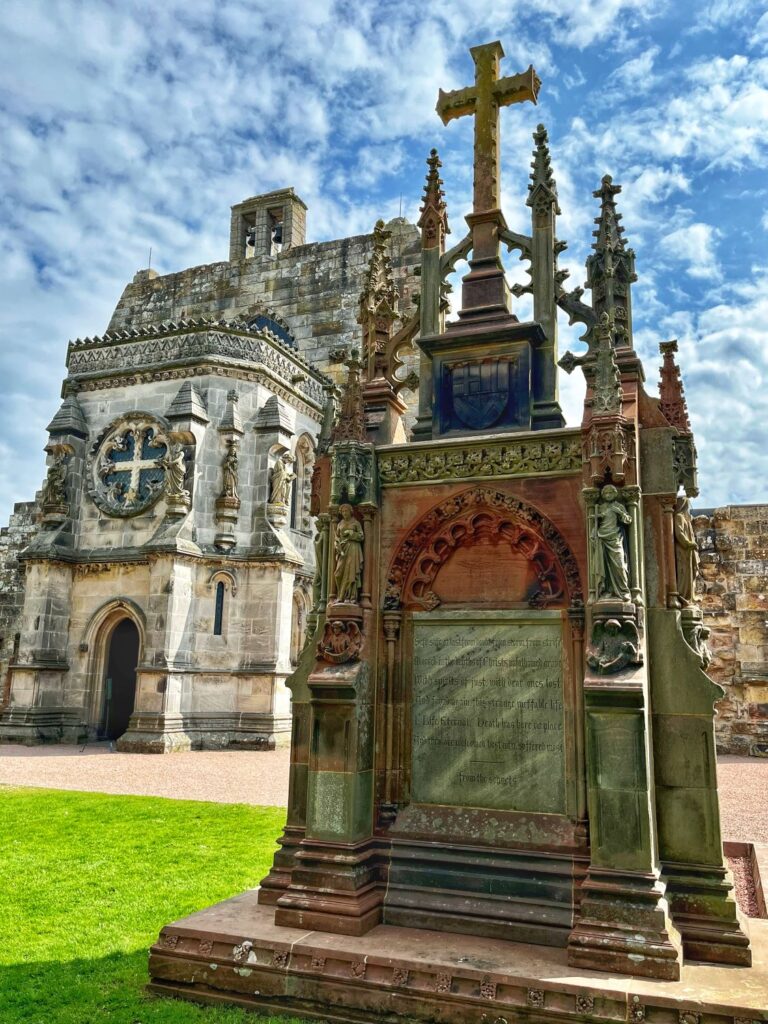
Our next stop, while not officially on the itinerary, was the ruins of a church belonging to the Order of the Knights Templar. Our guide Ally P rambled on throughout most of the tour with corny jokes, lots of historical information, and a lot of movie references (which I really appreciated).
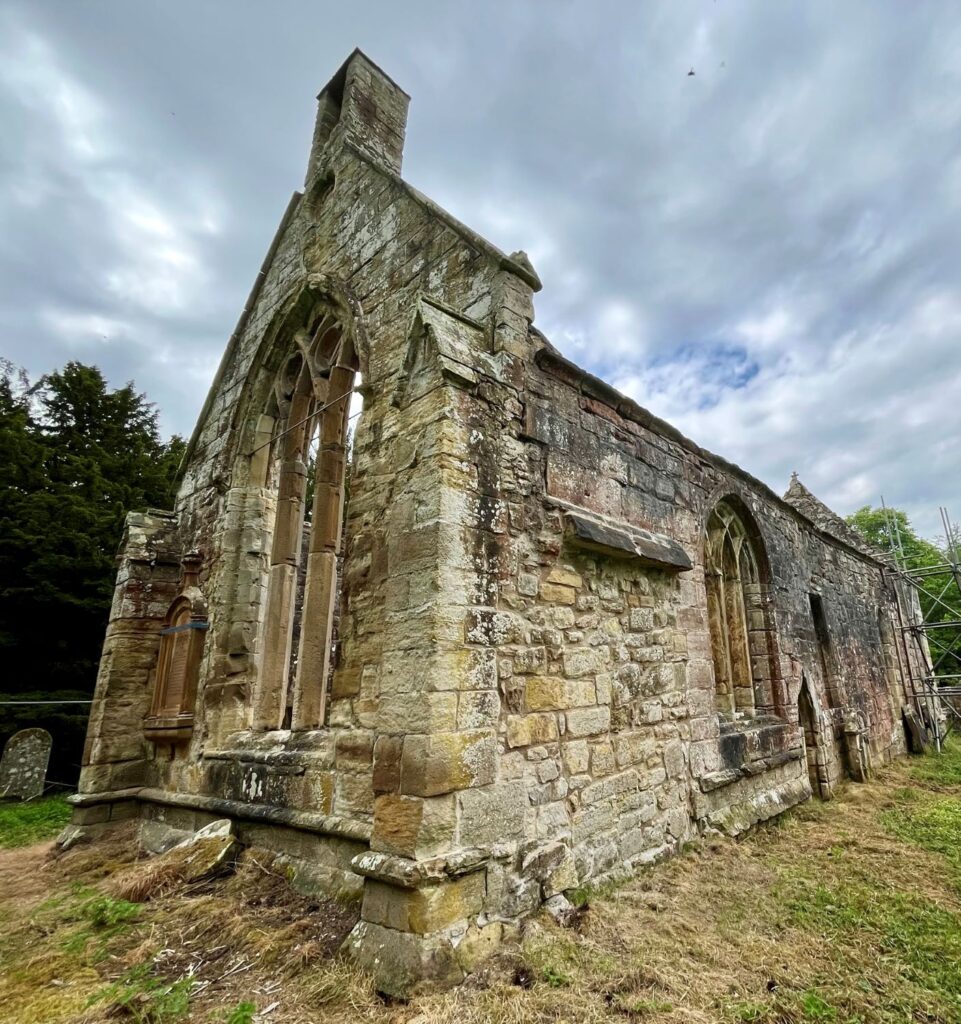
The third stop was a one hour visit in the small Scottish border town of Melrose. At this stop we could do as we wished. I spent most of my time wandering around the ruins of the Melrose Abbey. You can no longer go inside the ruins as there is a danger of rock fall. Robert the Bruce’s heart is buried here. Robert the Bruce (Robert I) was King of Scots from 1306 to 1329. He led Scotland during the First War of Scottish Independence against England. He was able to restore Scotland to an independent Kingdom during his reign and is regarded as a national hero. There is a museum nearby with beautiful grounds.
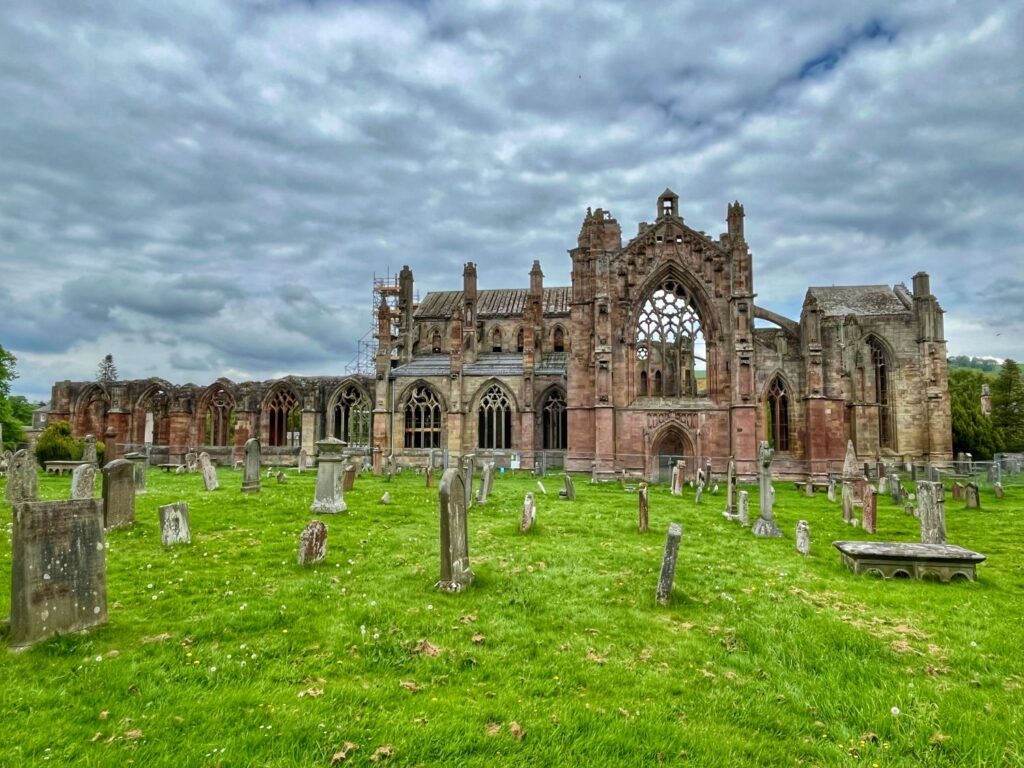
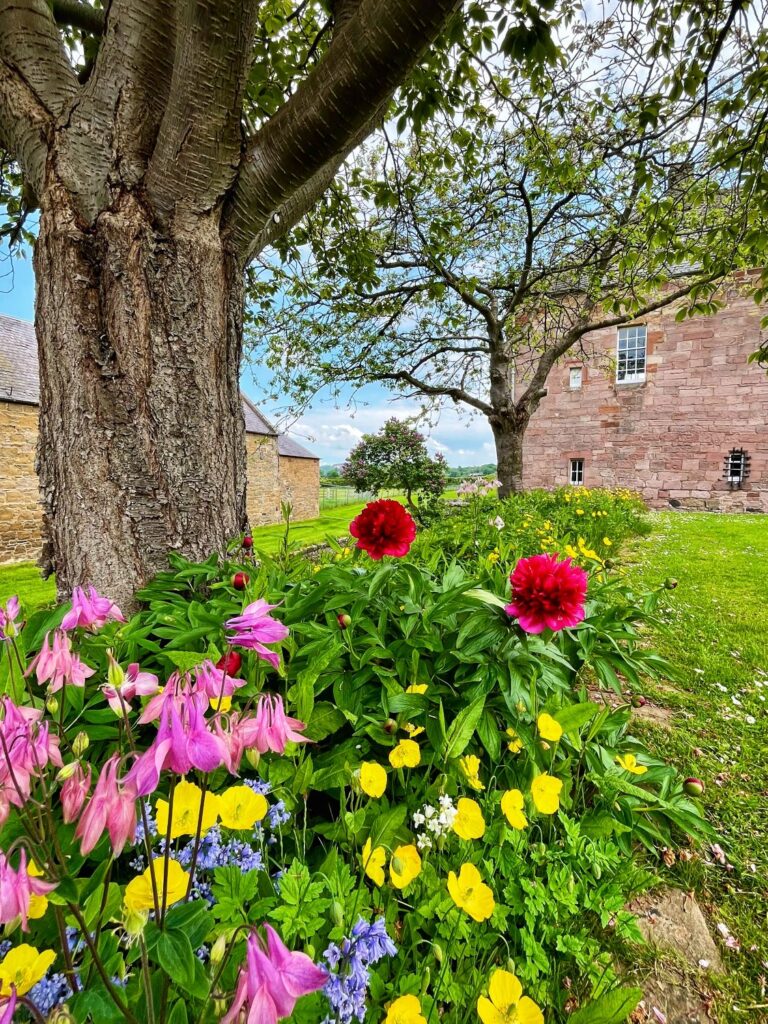
Our fourth stop was the Sir William Wallace statue. Sir William Wallace was a general and governor of Scotland during the First War of Scottish Independence. He died in 1305 and was succeeded by Robert the Bruce. In 1305 he was captured near Glasgow and handed over to King Edward I of England, who had him hanged, drawn and quartered for high treason and crimes against the English. We walked about a quarter mile along a lovely forested path to reach the monument. The large statue of Sir William Wallace is 31 ft high and is made of red sandstone. It looks out over the River Tweed and was erected in 1814. This is not the National Wallace Monument, which also commemorates the Scottish hero. The National Wallace Monument is a 220 ft tower overlooking the town of Stirling, north of Edinburgh.
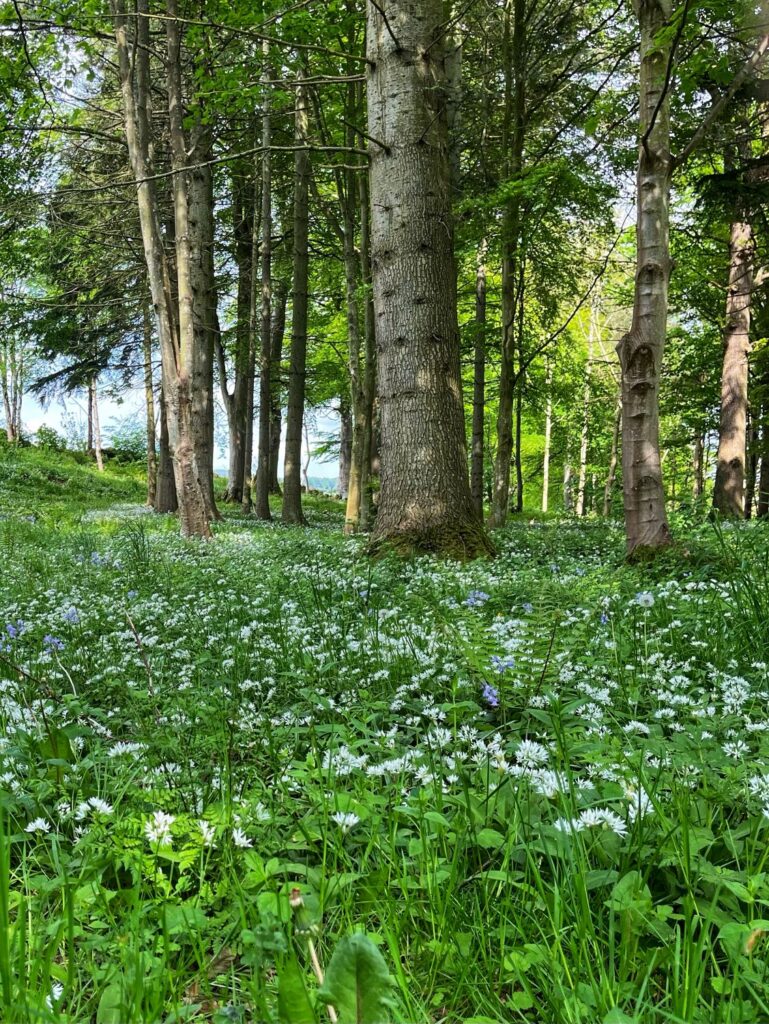
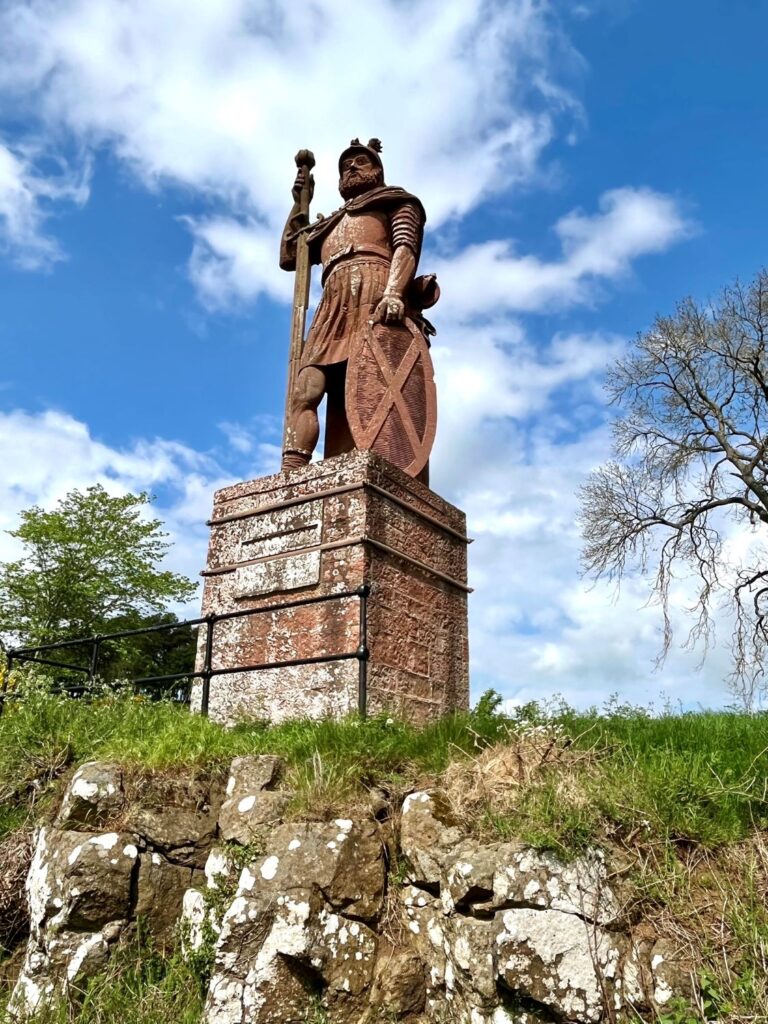
Our final stop of the day was Scott’s View, a scenic viewpoint looking west over the River Tweed and the three peaks of the Eildon Hills. This was a favorite viewpoint of Sir Walter Scott on his way home to Abbotsford. The foreground was covered in Gorse, allowing for some beautiful photographs. This view heightened my excitement for the views that I knew were coming in the near future.
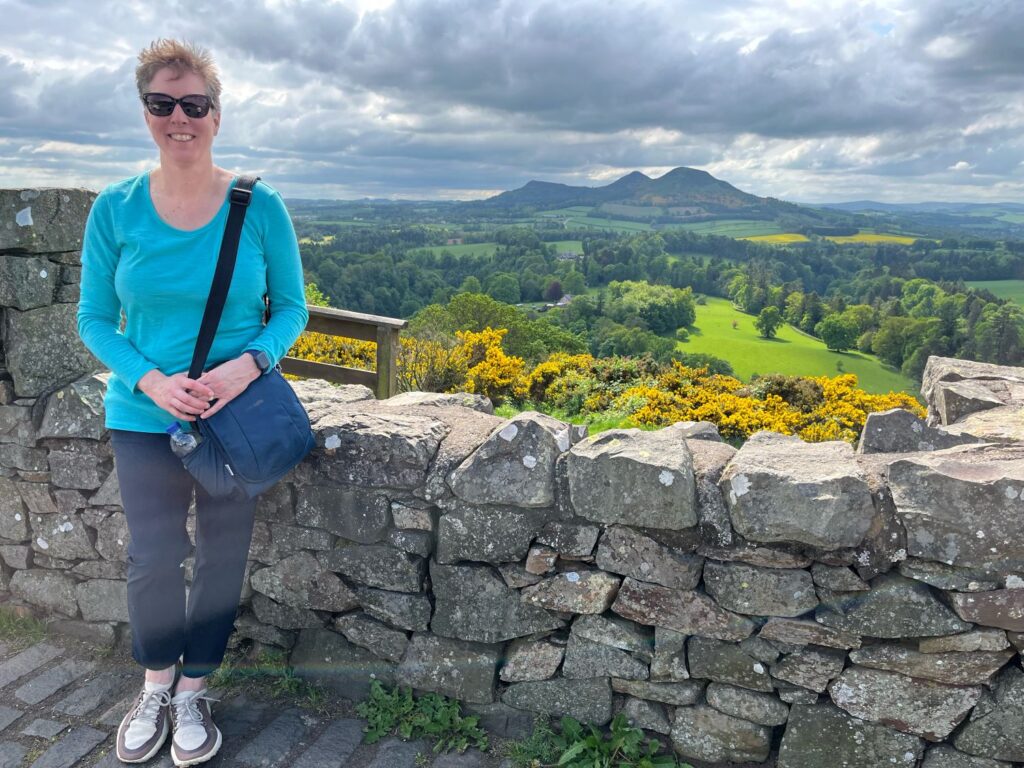
We returned to Edinburgh around 4:30pm. The weather was gorgeous so I walked thru the Princes Street Gardens and took some photos of the Scott Monument which was built to honor the Scottish author, Sir Walter Scott. It is the second largest monument in the world built to honor an author. The monument stands 200 ft tall and has spiral staircases inside that lead to several viewing platforms. This attraction was on my list of things to see but the timing was never right for me to buy tickets for the tour (you could not book ahead). For dinner I ate on Grassmarket Street at Bertie’s Fish and Chips. I walked back to the Air B&B after dinner since I hadn’t done a lot of walking on this day. Back at the Air B&B I packed up for my train journey to Inverness the following morning and the start of my Highlands Hiking Adventure. Total miles walked 8.1.
